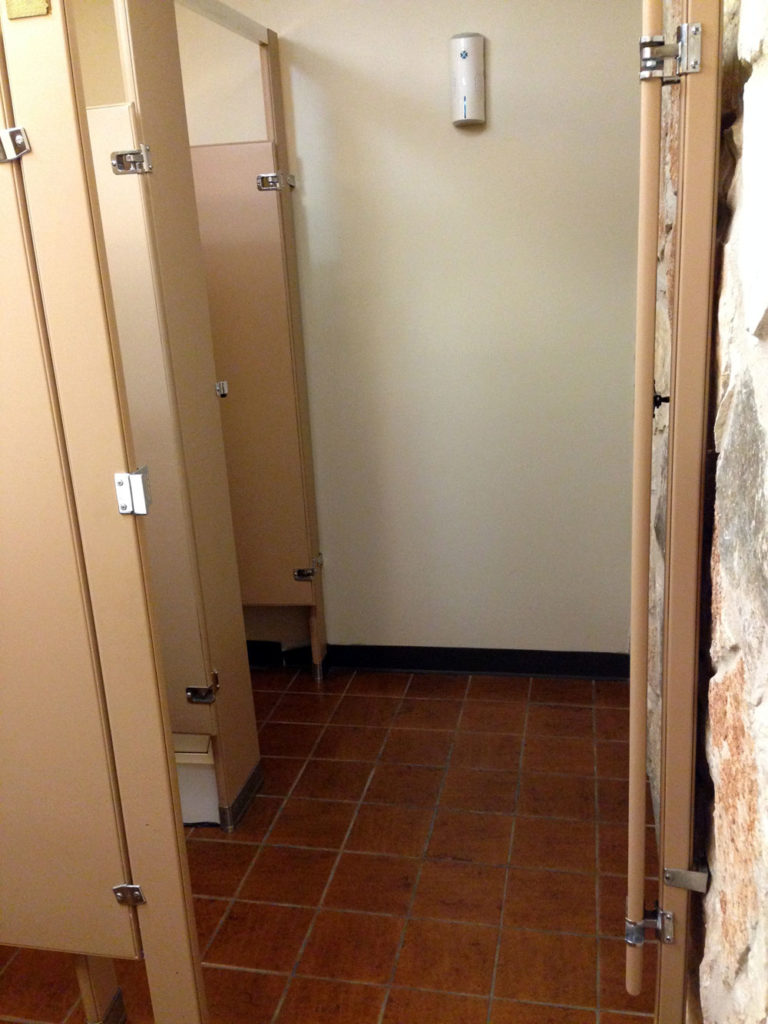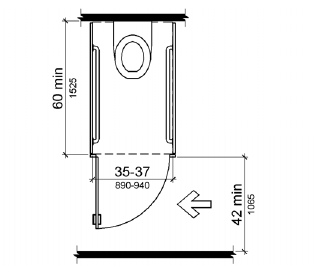The other day, I was in an older office building, definitely pre-ADA (1990). I went into the bathroom and saw an interesting and flawed attempt to retrofit it for accessibility.

The bathroom has two regular-sized stalls with openings I estimated to be about 30″ wide. In order to accommodate a wheelchair, someone just added a door that would close off both stalls since neither stall is large enough to allow wheelchair access.
Granted the ADA regulations for bathrooms are complex and confusing to the lay person but even so, I’ve seen enough bathrooms to understand this was not cutting it.
This drawing demonstrates some of the features required of an accessible stall. I can’t be sure of the width or depth of the stall, only that it lacks grab bars and the door opens inward.
This kind of oversight might not seem like a big deal to most people; but if you’re in a wheelchair and can’t use the bathroom, that’s an indignity. I’m always disappointed when I see half-ass things like this 26 years after the ADA was passed.
Design Recommendation
Seems like there are two good options:
- If you’re going to restrict the bathroom to use by one person only if she is in a wheelchair, remove the other stall and make one, large, accessible stall. The building is not that busy.
- Move the door for the first stall to the side wall so it’s usable even when someone else is in the accessible stall. Then remove the door on the accessible stall, turn the commode sideways, and install grab bars.

